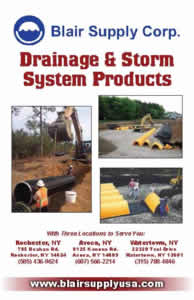Blog
5 Recent Water Main Breaks
It’s unfortunate that water mains break all the time resulting in unwanted treated water to spill out into streets, roadways, and flooding basements. The American Society of Civil Engineers estimates in 2017, the newest data they have from their annual report, that 240,000 water main breaks happen each year in the U.S., with 2 trillion gallons of treated drinking water escaping and going to waste. This means 14 to 18 percent of treated water is lost each day; this is enough water to serve 15 million homes annually. And it gets worse: due to aging infrastructure a 2018 study from Utah State University found that main water breaks in the U.S. have gone up 27 percent in the last six years alone and without any major upgrades to the country’s water infrastructure, that number is only likely to increase.
Part of the problem is that water bills paid by utility customers aren’t enough to fund these upgrades to the infrastructure which keep increasing. In fact the American Water Works Association estimates a $1 trillion is needed to completely overhaul the water system.
Here a few recent examples of burst water mains:
Detroit – April 16th 2019
Two water pipes burst in Detroit preventing some of the residents on Wabash Street in the neighbourhood of Corktown from even leaving their homes in morning because the water was so high. The cause of all this water was two water main breaks on Michigan Avenue. However, the Detroit Water and Sewerage Department wasn’t sure of why these pipes broke, old age and poor maintenance is likely to blame as the pipes under the road were built in the 1800s. Some expects also suspected the drains were clogged with leaves and other material which didn’t allow the water to run off, causing unnecessary build up. Some businesses along Michigan Avenue had to have their water turned off which forced them to shut down for the day. Now, Detroit is embarking on a $500 million program to begin upgrading the water and sewer systems.
Pittsburgh – March 27th 2019
Not one, but two water mains burst on March 27th in the morning leaving almost 700 people without water service and forced the closure of nearby Mt. Lebanon High School for the day. The water main breaks occurred around 5 a.m. in the morning. One water main was along at the intersection of Cochran and Lebanon Avenue near the school and the smaller pipe was at Cochran and Royce Avenue, several blocks away. Cochran Road was closed for about an hour between Lebanon and Florida Avenues near the high school. Again old age and poor maintenance was blamed for the break.
Moses Lake – April 22 2019
Moses Lake is a small city in Grant County in Washington State and they had nearly one million gallons of water spill out into the streets after multiple water mains broke along Division Street. The break was so bad the city had to declare an emergency to replace the failing water main. Over 930,000 gallons of treated water was lost during the four main breaks, which also caused damage to the streets during the flooding and disrupted service for businesses and homes in the area.
The existing water mains on Division were originally constructed with AC pipe in the 1970s and 80s. City Public Works staff has made emergency repairs to the same water main in the past.
Because of the four pipe bursts, the city decided to invest money into its infrastructure. The emergency declaration also allowed Moses Lake to waive the formal bidding process, which can take weeks, delaying the repairs. The council then approved a contract with Pegram Construction, to complete the repairs for about $113,500. About 770 feet of pipe were replaced in order to prevent further breaks which could result in property damage and dangerous conditions on the road.
Canonsburg – June 12th 2018
Residents in Canonsburg, which is in the borough in Washington Country in Pennsylvania, had their water turned off for hours last June, following a water main break on Julia Drive. The 8-inch water line was over 70 years old when it burst. Fire crews were at the scene for about 3 hours, waiting for Pennsylvania American Water to arrive and fix the water leak. Around 50 homes were without water for most of the morning, but service was mostly restored by lunch time. In addition, five homes had their basements flooded, leaving some water damage from the break, and several yards were rutted. The small town of Canonsburg is about 18 miles southwest of Pittsburgh and was incorporated in 1802.
Charlottetown March 11th 2019
Utility crews with the water and sewer utility in Charlottetown, which is in eastern Canada, were grappling with a higher than usual number of water main breaks across the city in March. There were at least five water main breaks, mostly in the central part of the city.
When the temperature warms up during Spring and the snow melts, there are always a couple of water main breaks – but this year there have been more than in previous years. Last year there were 21 breaks and during the first couple months of the year there have already been 10. This is caused in part by aging infrastructure as in some parts of the city the pipes are over 100 years. They city has pledged to significantly upgrade the existing infrastructure.
What Governments Can Do About Water Main Breaks
Besides from ripping out all the old pipes and replacing it with new, state-of-the-art water mains, what can a civic government do in order to prevent bursting and mass flooding? The best way to prevent any accidents according to the American Water Works Association is to start with a water audit and calculate the amount of water that would travel through an ideally efficient system, and comparing it to the amount that actually gets used by the city’s citizens.
The result of that audit gives civic governments at least some idea how much treated water is being lost and how to fix it. The government can then proactively hire contractors to fix the leaks. The key, ultimately, is to always monitor the water infrastructure and to keep on top of any cracks or leaks before they burst and cause serious damage which is expensive to clean up and fix.






